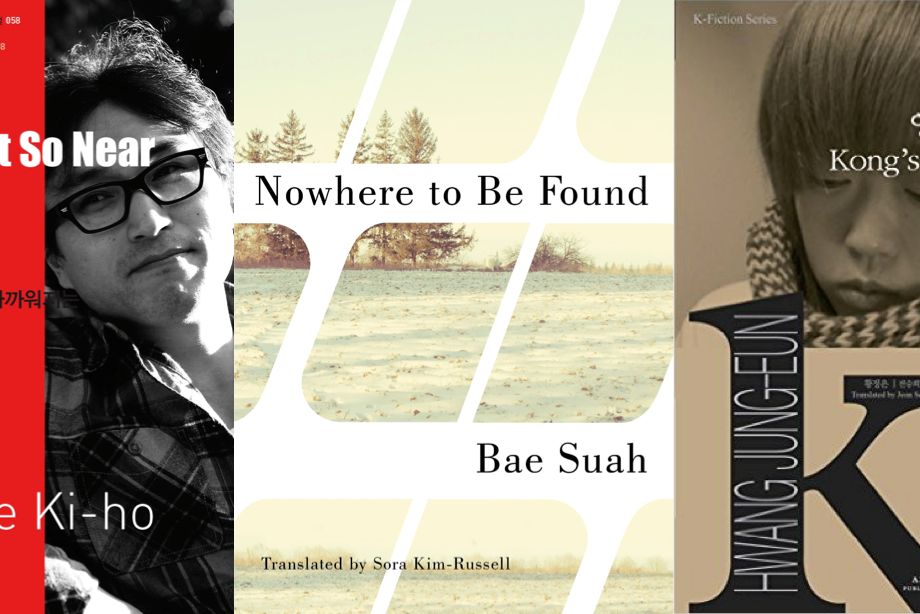
The Fantastically Dark World of K-Lit
This essay was co-written by Charlotte Hammond, a Seoul-based American writer and copywriter.
Contemporary South Korean literature has yet to take off in the way of South Korean cinema, cuisine or popular music. It hasn’t garnered global attention to the degree of the aforementioned mediums and may not have captured adequate attention even at home. The Korea Herald recently described the country’s literary scene as “moribund,” in a story focused on a plagiarism scandal surrounding one of its brightest stars, calling the controversy “almost the only source of excitement”.
It may be that South Korean literature could use better marketing. Nevertheless, talented, innovative, political Korean writers are putting out literary fiction highly deserving of readers’ attention. In much of contemporary South Korean fiction, writers split open society’s structures and spelunk into its darkest places. Stories often missing from the popular national narrative: those of the marginalized, the suffering, the disturbed, have a pulse in contemporary fiction.
Whether you are just beginning a foray into South Korean literature or are hungering for more, the following novels and novellas are rich works by authors worth watching.
Hwang Jung-eun’s Kong’s Garden is a story about life in the margins of South Korean society, the kind of limited existence excluded from fairy tale hallyu dramas but one which represents the reality of a growing number of young Koreans.
The novella follows an unnamed narrator as she works a mundane job at a bookstore. As she recounts her work history (KFC, a family restaurant, a clothing store), we sense her resignation from aspects of her life. Customers affront her dignity, her home life is dismal, none of her jobs have paid enough. She is forced to confront the stasis in her life after witnessing an incident of child prostitution. Instead of calling the police she questions what she sees. When it is learned the girl has vanished, the narrator has to digest the community’s wrath. The disappeared girl’s mother continually confronts the narrator before fecklessly setting up camp each day outside the bookstore with giant pixelated pictures of her daughter. Attempts by our narrator to create something (raising cats) or explore new possibilities (a possible labyrinth hidden behind her basement walls) come at the instigation of others and fail to reveal deep meaning for her.
Jae-O, “a graduate of a prestigious university…preparing for the civil service examination”, who works at the bookstore for pocket money, is our narrator’s foil. Representative of the considerable highly educated, underemployed spate of the population, Jae-O demands from the small bookstore what he believes he deserves, namely employer-provided insurance and retirement allowance, and quits when the owner refuses. It is this disconnect between what people have and what they think they deserve that lies at the core of Kong’s Garden.
“In every story, people leave blanks, and in order to fill these blanks, they create different stories.”
It is by this axiom that Lee Ki-ho’s novella, So Far, and Yet So Near operates. In this fractured narrative, the reader must fill in the gaps. This is also the challenge of our narrator, a thoughtful twenty-something who attempts to retrace the life of his distant uncle. One day, Uncle abandons his cherished yet heavily-used Kia Pride and disappears without a trace. This is shocking to our narrator as all of his memories of Uncle are connected to the car, which the narrator’s grandmother bought for Uncle in hopes he could use it to get a wife. Uncle’s life is mostly a mystery to the entire family until the narrator discovers a meticulous travelogue documenting Uncle’s road travels. The notes read like love poetry, seemingly simple facts upheld by incredible detail. A peculiar fact is that the car cannot go backwards, a quirk that the narrator finds out when he uses the car for the first time (for a date, no less).
As our narrator further unfurls Uncle’s mystery, he visits the far-flung village of Hadong on a hunch that Uncle’s love interest and perhaps Uncle himself exist there. Lee Ki-ho’s text doesn’t provide any easy answers as to what happened to Uncle. Just like our narrator, we’re left to piece together different, complicated eventualities.
Nowhere to Be Found is promising writer Bae Su-ah’s first full-length novel featuring (yet another) nameless narrator and depicts a late 1980s South Korea in a state of major flux. Bae’s protagonist is an unmarried woman skeptical of love and commitment.
In fact, she seems reluctant to participate in her society altogether. Though she graduated from university, she is not enthralled by the prospect of full-time employment and distantly watches friends fall into salaried positions or go off to serve in the military. Being that she is from an unwealthy family beleaguered by her father’s incarceration, her mother’s alcoholism, and her brother’s unemployment, she doubts she is privy to a life of happiness. She describes the democracy protests of the era as peripheral noise offering no optimism. Observing it all from the perspective of her temporary position as a university admin, she could be describing her country or her life when she says it was “not a place for a revolution, nor should it be.”
The character’s greatest triumph, (and the reader’s as well in this otherwise uber-dreary narrative) is her unfailing ability to feel, to rage against a friend’s mother who insults her, to despair, to laugh at the conventional delusions of her earnest lovers, to react to the world that would otherwise obscure her.
The Seoul Book and Culture Club, led by Barry Welsh, aims to expose more readers to Korean authors as well as works focused on Korean issues. More information about the club can be viewed here. Azalea, a journal of Korean literature and culture published by the University of Hawai’i Press, features translations of cutting-edge South Korean fiction and is available at most university libraries.


